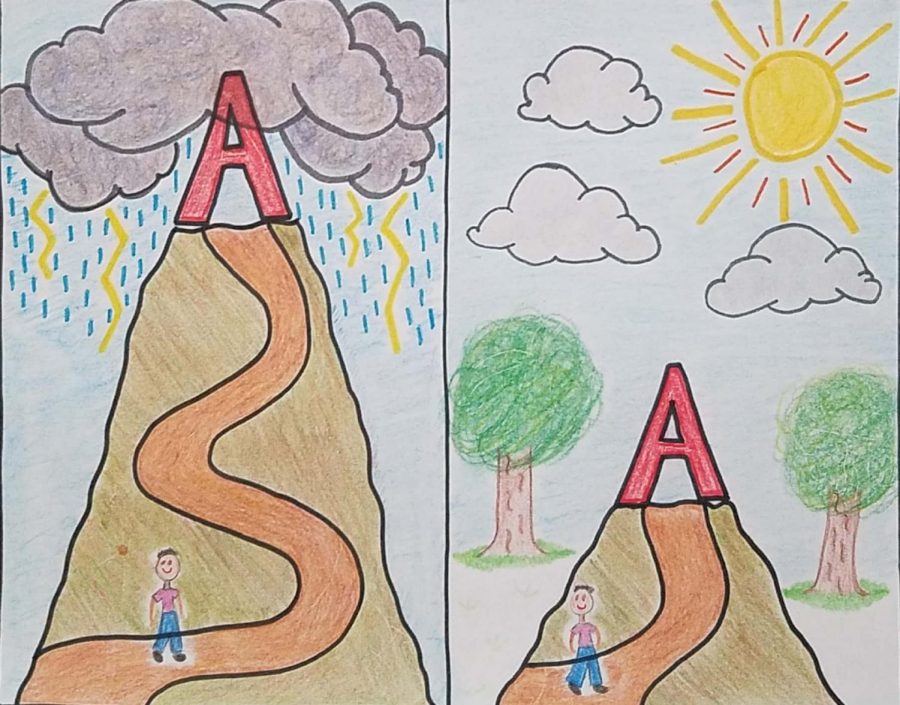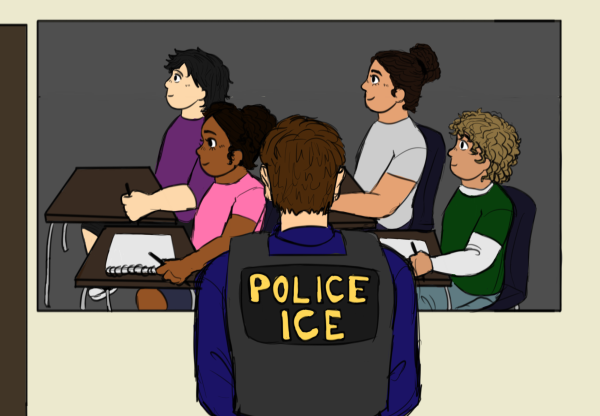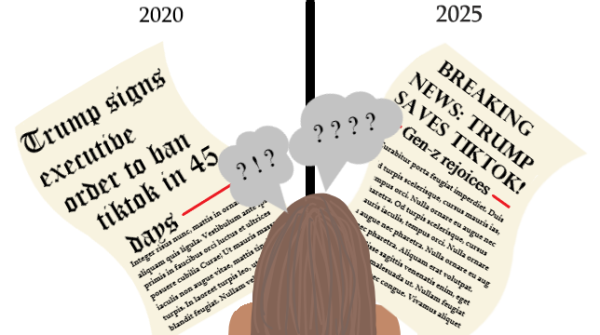An easy A
Lenient grading does not benefit students
Before the COVID-19 Pandemic and distance learning, a high grade, such as an A, took a long and treacherous journey to achieve. Now, due to a more lenient grading system, the journey is easier.
Grades, the driving force behind many students’ motivation and self-worth in school. However, given the troublesome COVID-19 pandemic, numerous high school students have lost the motivation to continue doing school work after shifting to online learning. Unfortunately, teachers are resorting to lenient grading to make up for this setback, which leads to a multitude of problems.
The National Association of Student Financial Aid Administrators (NASFAA) conducted a survey that reveals shocking and equally concerning numbers. After surveying “22,529 undergraduate students and 7,690 graduate and professional students from five […] public research universities,” 76 percent of undergraduates and 56 percent of professional students said the lack of motivation was their biggest challenge in school. All indications point to student motivation during distance learning to be an issue; it is not uncommon to feel less inclined to work. However, the problem starts when teachers recompense students by grading leniently.
While some teachers may believe that giving out high grades to mediocre work is the solution, it actually does more harm than good.
According to the Tampa Bay Times, teachers in Tampa middle schools and high schools began to use the “grace before grades” approach after noticing the decrease in grade averages during online learning. After a poll was conducted quantifying the change in grades when “harsher” grades were replaced with more lenient ones, there was always an increase, in terms of Math and English. Instead of problem-solving entirely, teachers were placing a band-aid solution on the dilemma by grading leniently.
Alarmingly, teachers being merciful when grading assignments during the pandemic can plant a false sense of success within students. As Contributor David Cassalpi from Michigan State University explains, grade inflation can actually negatively affect students’ motivation. Students witnessing their grades significantly increasing causes them to become overconfident thereby incentivizing them to study less.
Additionally, lenient grading is a two package deal; it is heavily tied to grade inflation. As Merriam Webster defines, grade inflation is “a rise in the average grade [given] to students, especially […] grades higher than previously assigned for given levels of achievement.” The entire idea of inflating a students’ grade to compensate for their lack of motivation is extremely harmful because the leniency of each teacher isn’t identical across schools. Some students won’t receive the same benefits that others might receive from lenient graders.
To help visualize the consequences of grade inflation, a hypothetical situation should put it into perspective. Say, for example, Mr. Nice-Guy is more lenient with grading than Mrs. Meanie. Students of Mr. Nice Guy will receive better grades than those in Mrs. Meanie’s class, even though their mastery of the work is identical. After students tell their parents about Mr. Nice-Guy being a better teacher because he distributes higher grades, the parents will make it their goal to transfer their child to his class. Consequently, school administrators will begin to think that Mr. Nice-Guy is a superior teacher simply based on how he grades, but in actuality, that is far from the truth.
Lastly, the effects of leniency on grading at the college level is dramatic. In the past, college admission officers would highly value a student’s Grade Point Average (GPA), but given the rising GPAs, it has become challenging to distinguish a well-accomplished applicant based on grades. As stated in “Grade Inflation: When A is for Average” by Jed Applerouth, Ph.D., “An A average is no longer a distinguishing factor for most applicants, and admissions officers have to work harder to discriminate between students, putting more weight on other achievement factors.”
Despite these challenges, teachers can work to prevent the source of the issue: lack of motivation. When motivational techniques are put into practice by educators, the issue of whether or not to grade leniently to compensate for students’ lack of motivation during the pandemic will no longer be an issue. According to “Raising Student Motivation During the Pandemic” by Shruti Nagpal, Ph.D., strategies teachers can implement in their classes to promote students’ motivation are: incorporating more collaborative learning to foster social interaction, emphasizing the control students have over their learning to control their grades and providing feedback to students incentivizing them to improve.
Nevertheless, motivation is a rocky component of a students’ life in distance learning, it’s constantly fluctuating. However, accompanied by the involvement of a caring teacher who is effectively trying to boost their students’ drive to work, this issue can be alleviated. A caring teacher is not one who is lenient—but one who pushes their students and gives honest feedback.

I am a senior at Bonita Vista High School and this is my second year on staff. I joined newspaper in order to achieve my full potential with my writing...

I am currently a junior and this is my second year on the Crusaders staff. After being a Staff Writer for a year I found joy in sharing others’ stories,...









